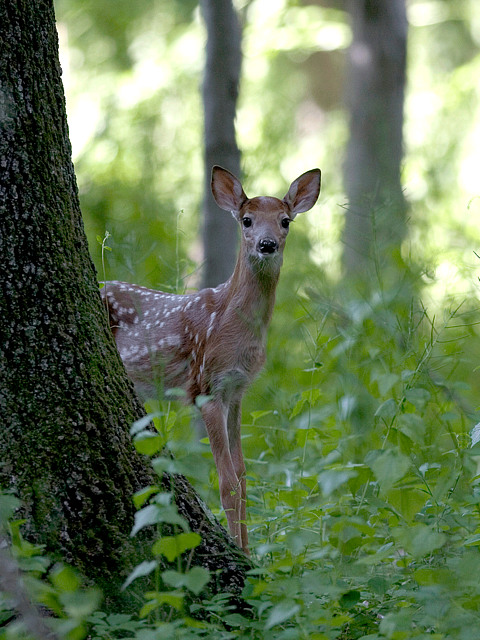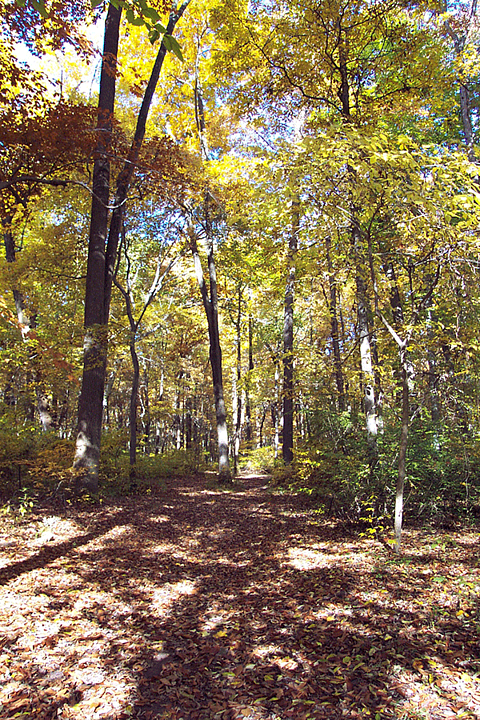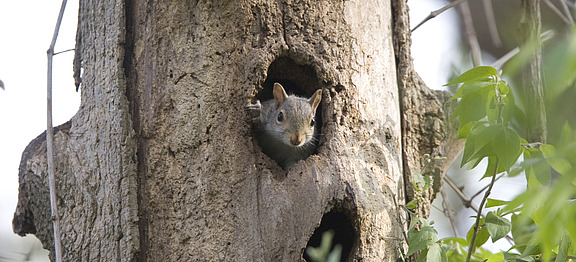A Refuge for Ideas and Wildlife

The Institute was conceived as a refuge for ideas, but it also serves as a refuge for wildlife. Oswald Veblen, who arrived in Princeton in 1905, loved the outdoors and played an instrumental role in acquiring the Institute Woods, now a 589-acre nature reserve that forms a key link in a network of green spaces in central New Jersey. In addition to serving on the Buildings and Grounds Committee, Veblen “organized what was called a wood-chopping group,” according to Deane Montgomery, the late Professor (1951–92) in the School of Mathematics.
“They used to go out and clear some of the paths that nobody had cleared at that time.” Veblen was joined by many notable figures, including the distinguished physicist Paul Dirac, a frequent Member in the School of Natural Sciences between 1934 and 1963. “No one will ever know how many problems in mathematics, physics, history, astronomy, economics, political science, social science, computing, and biology have been brought one step closer to a solution by a shared conversation or a solitary walk in the Institute Woods,” wrote George Dyson, a former Director’s Visitor (2002–03) and son of Freeman Dyson, Professor Emeritus in the School of Natural Sciences, in the Institute Letter (Winter 2007).

The Institute Woods
The Institute’s preservation of the woods, farmlands, and surrounding lands was undertaken with the leadership of the late Princeton resident Frank E. Taplin Jr., Institute Trustee and Trustee Emeritus for more than thirty years. The preservation was done as part of the 1997 Greenacres easement that unified nearby preserved lands, further protecting a fifty-six-mile-long greenway network through central New Jersey that is critical for the feeding and nesting of two hundred species of birds on the Atlantic flyway.
With the assistance of dedicated donors, the Institute funds the maintenance of the Institute Woods and farmlands, which are utilized year-round by the public. In 2008, local residents Addie and Harold Broitman, Friends of the Institute since 1994, made a generous gift through the Broitman Foundation to support trail maintenance for the benefit of all who use the Woods.
Princeton Battlefield

Over the decades the Institute has provided land to help establish the nearby Princeton Battlefield State Park. In the early 1950s, the Institute leased land to the State to increase the size of the park, and in 1973, it conveyed thirty-two acres to the State to enlarge the size of the park by 60 percent. In 1959, the Institute donated the former Mercer Manor monumental portico that now stands on the Battlefield north of Mercer Road, commemorating the common grave of unknown American and British soldiers killed in the Battle of Princeton in 1777.
From its earliest days, the Institute has sought to cultivate a sense of community and curiosity that extends beyond its campus. Every year, the Institute offers free lectures and concerts to the public, who may also meander the same grounds that have provided a place for contemplation and discussion for generations of Institute scholars from Veblen and Einstein onward.
